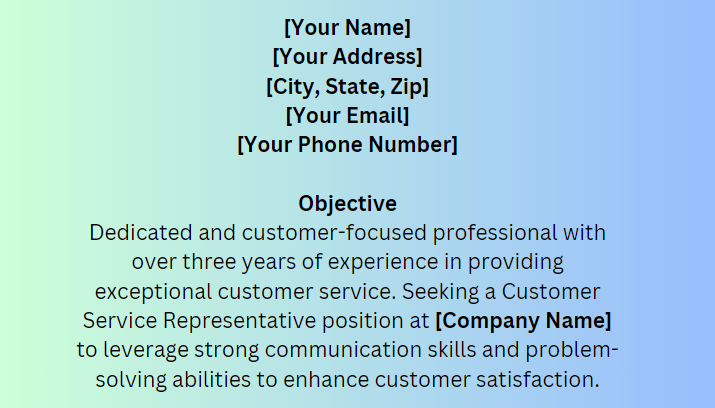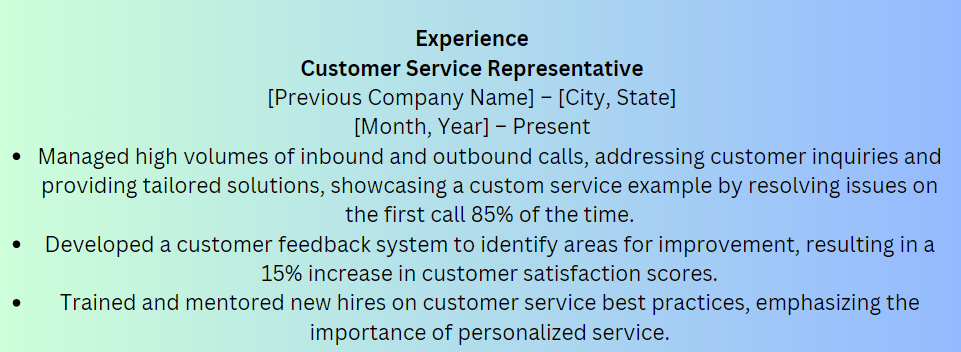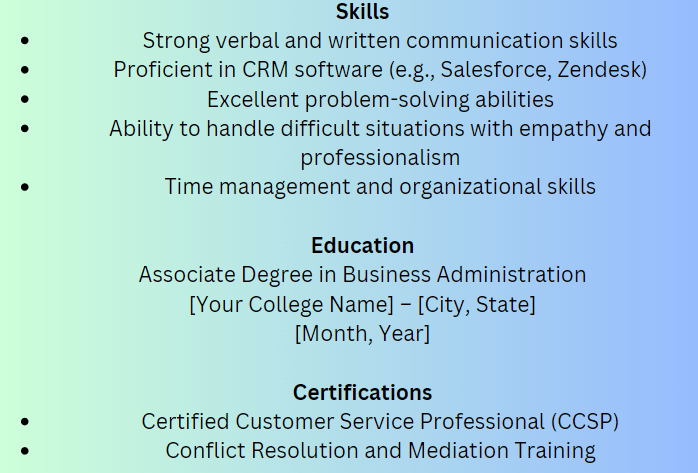History
Custom service history highlights the evolution of interactions between businesses and their clients. One notable custom service example from the early 20th century is the emphasis on personalized, face-to-face interactions, where employees built strong relationships with customers. This approach laid the groundwork for understanding the importance of customer satisfaction.
As businesses grew, more structured methods emerged, including the introduction of call centers. A custom service example from this era is how companies began to centralize customer inquiries, allowing for faster responses and more efficient issue resolution.
With the rise of the internet, businesses adapted by offering email support and online chat, further evolving the customer experience. A modern custom service example is seen in companies that utilize CRM (Customer Relationship Management) systems to track customer interactions and preferences, enhancing personalization.
Social media has since transformed customer service, enabling real-time communication. Today, a custom service example might involve a company responding to customer feedback on platforms like Twitter, showcasing their commitment to immediate support.
Ultimately, the history of customer service illustrates the shift from transactional interactions to building lasting relationships, with numerous custom service examples reflecting this ongoing evolution in approach and strategy.
Custom service meaning

A custom service example can be seen in the hospitality industry, where staff members go above and beyond to accommodate guests’ needs. For instance, a hotel might personalize a guest’s stay by remembering their preferences for room temperature or offering complimentary items based on past visits. This level of attention not only improves the guest experience but also encourages repeat business.
In retail, custom service takes on various forms, such as in-store assistance and online support. A custom service example in this context is a clothing retailer that offers virtual styling consultations. By engaging with customs through video calls, the retailer can provide personalized recommendations, fostering a sense of connection and satisfaction.
The rise of technology has further transformed custom service, with many businesses implementing chatbots and AI to provide instant responses to custom inquiries. A custom service example in the tech sector might include a software company that offers 24/7 custom support through multiple channels, including live chat, email, and social media. This approach not only meets custom demands for immediate assistance but also showcases the company’s commitment to exceptional service.
Ultimately, effective custom service is about understanding custom needs and delivering tailored solutions. By focusing on personalized interactions and proactive support, businesses can create memorable experiences that drive loyalty and growth.
Customer Service Representative Example Resume:
Creating a compelling resume for a Customer Service Representative position is essential to stand out in a competitive job market. A strong resume should highlight relevant skills, experience, and accomplishments that showcase your ability to deliver excellent customer service. Here’s a detailed example of how to structure such a resume:




In this resume example, the focus is on demonstrating how past experiences reflect the candidate’s ability to provide excellent customer service. Each role includes specific achievements and examples that illustrate their skills and effectiveness. Incorporating custom service examples helps potential employers visualize how the candidate can contribute to their team. Remember to tailor your resume to the specific job you are applying for, emphasizing the skills and experiences that are most relevant to the position.
Thought-Provoking Customer Service Survey Questions for Optimal Feedback and Insights:
Are you tired of receiving vague and unhelpful responses from your customer service surveys? Look no further! In this article, we have compiled a list of 10 thought-provoking customer service survey questions that will provide you with optimal feedback and insights. Whether you are a small business owner or part of a large organization, these questions will help you better understand your customers and improve your service.
From probing questions about satisfaction levels to inquiries about specific aspects of your business, each question has been carefully designed to elicit detailed and valuable responses. By asking the right questions, you can gather actionable data that will enable you to make informed decisions and enhance the overall customer experience. With these thought-provoking survey questions in your arsenal, you can gain a deeper understanding of your customers’ needs, preferences, and pain points.
By leveraging this knowledge, you can take your customer service to new heights, boosting customer satisfaction and loyalty in the process. Don’t settle for generic feedback – start asking the right questions today to unlock meaningful insights that will drive your business forward.
Customer Service Survey Questions
Are you tired of receiving vague and unhelpful responses from your customer service surveys? Look no further! In this article, we have compiled a list of 10 thought-provoking customer service survey questions that will provide you with optimal feedback and insights. Whether you are a small business owner or part of a large organization, these questions will help you better understand your customers and improve your service.
From probing questions about satisfaction levels to inquiries about specific aspects of your business, each question has been carefully designed to elicit detailed and valuable responses. By asking the right questions, you can gather actionable data that will enable you to make informed decisions and enhance the overall customer experience.
With these thought-provoking survey questions in your arsenal, you can gain a deeper understanding of your customers’ needs, preferences, and pain points. By leveraging this knowledge, you can take your customer service to new heights, boosting customer satisfaction and loyalty in the process.
Don’t settle for generic feedback – start asking the right questions today to unlock meaningful insights that will drive your business forward.
The importance of customer service surveys
Customer service surveys are a vital tool for businesses of all sizes to gain valuable insights into their customers’ experiences, preferences, and pain points. By collecting feedback directly from the people who interact with your company, you can uncover areas for improvement, identify strengths, and make informed decisions to enhance the overall customer experience.
These surveys serve as a direct line of communication between your business and your customers, allowing you to gain a deeper understanding of their needs and expectations. The data collected can be used to identify trends, measure customer satisfaction, and pinpoint specific areas that require attention or optimization. This information is essential for driving business growth, improving customer loyalty, and maintaining a competitive edge in the market.
Effective customer service surveys can provide a wealth of benefits, including increased customer retention, improved brand reputation, and better-informed product or service development. By actively seeking feedback and demonstrating a genuine commitment to addressing customer concerns, businesses can foster stronger relationships with their clientele and position themselves as customer-centric organizations that prioritize the needs of their target audience.
Understanding the goals of customer service surveys
The primary goal of customer service surveys is to gather actionable insights that can be used to enhance the overall customer experience. By understanding your customers’ pain points, preferences, and satisfaction levels, you can make informed decisions to improve your products, services, and support offerings.
Another key goal of customer service surveys is to measure the effectiveness of your customer service team and identify areas for improvement. By asking targeted questions about the quality of interactions, response times, and the resolution of customer issues, you can gain valuable feedback that can be used to train and empower your customer service representatives.
Ultimately, the overarching goal of customer service surveys is to foster stronger, more meaningful relationships with your customers. By demonstrating a genuine interest in their feedback and a commitment to addressing their concerns, you can build trust, increase loyalty, and position your business as a customer-centric organization that prioritizes the needs of its clientele.
Key considerations when designing survey questions
When designing customer service survey questions, it’s essential to keep the goals of your survey in mind and craft questions that will provide you with the most valuable and actionable insights. Here are some key considerations to keep in mind:
Clarity and conciseness: Your survey questions should be clear, concise, and easy to understand. Avoid using jargon or complex language that could confuse or alienate your respondents.
Relevance and specificity: Each question should be directly relevant to the customer’s experience and address specific aspects of your customer service, such as response times, product knowledge, or problem-resolution.
Variety and balance: Include a mix of quantitative and qualitative questions to gather both numerical data and in-depth, contextual feedback. This will provide a well-rounded understanding of your customers’ experiences.
Emotional engagement: Incorporate questions that elicit emotional responses, as these can provide valuable insights into your customers’ perceptions and feelings about your brand.
Actionable insights: Design your questions with the goal of gathering data that can be directly applied to improving your customer service and overall business operations.
By keeping these key considerations in mind, you can craft a customer service survey that will yield meaningful, actionable insights to help you enhance the customer experience and drive business success.
FAQ’s
How likely are you to recommend our company to a friend or colleague?
This question is a classic Net Promoter Score (NPS) question, which is a widely used metric for measuring customer loyalty and satisfaction. By asking customers how likely they are to recommend your company, you can gain valuable insights into their overall perception of your brand and the quality of your products or services.
The NPS scale ranges from 0 (not at all likely) to 10 (extremely likely), and respondents are typically categorized as “Promoters” (9-10), “Passives” (7-8), or “Detractors” (0-6). This data can provide a clear indication of your customer satisfaction levels and help you identify areas for improvement.
Beyond the numerical score, this question also provides an opportunity for customers to share their reasons for their rating, which can uncover specific pain points or areas of satisfaction. By analyzing the qualitative feedback, you can gain a deeper understanding of what drives customer loyalty and advocacy for your brand.
Ultimately, this question is a powerful tool for measuring the overall health of your customer relationships and can serve as a valuable benchmark for tracking your progress over time. By understanding how likely your customers are to recommend your company, you can make informed decisions to enhance the customer experience and drive business growth.
What was your most memorable experience with our customer service team?
This open-ended question encourages customers to share their most memorable interactions with your customer service team, whether positive or negative. By focusing on specific experiences, you can gain valuable insights into the strengths and weaknesses of your customer service approach.
This question can reveal the factors that truly matter to them, such as the friendliness and responsiveness of your team, the effectiveness of their problem-solving skills, or the overall efficiency of the customer service process. This information can be used to identify best practices, recognize top-performing team members, and address any recurring pain points.
Moreover, by asking about memorable experiences, you can uncover the emotional aspects of the customer journey, which are often just as important as the functional elements. Positive experiences can highlight the moments when your team went above and beyond to delight customers, while negative experiences can shed light on the areas where customers feel let down or frustrated.
By analyzing the themes and patterns in the responses to this question, you can gain a deeper understanding of your customers’ priorities and expectations, and use that knowledge to refine your customer service strategy and training programs. This can lead to improved customer satisfaction, increased loyalty, and a stronger competitive position in the market.
What could we have done differently to exceed your expectations?
This question encourages customers to provide constructive feedback and suggestions for how your business can improve the customer experience. By focusing on exceeding expectations, rather than just meeting them, you can uncover valuable insights that can drive innovation and differentiation.
This question can reveal their pain points, frustrations, and unmet needs, which can be used to identify opportunities for improvement. Perhaps they felt that the response time was too slow, the product quality didn’t meet their standards, or the communication from your team was unclear. By understanding these specific areas for improvement, you can develop targeted solutions to address them.
Moreover, this question can also surface ideas and suggestions that you may not have considered before. Customers may propose creative solutions or innovative approaches that can help you stand out from the competition and better meet their needs. By actively soliciting this feedback, you demonstrate a genuine commitment to continuous improvement and a willingness to go the extra mile to delight your customers.
Analyzing the responses to this question can also help you identify patterns and trends that can inform your overall business strategy. Are there recurring issues that require a more systemic solution? Are there certain customer segments or touchpoints that consistently fall short of expectations? By addressing these broader challenges, you can make more impactful changes that enhance the customer experience across the board.
Ultimately, this question encourages customers to think critically about their interactions with your business and provides you with valuable insights that can be leveraged to exceed their expectations and drive long-term customer loyalty.
How well did our customer service team understand and address your needs?
This question directly assesses the effectiveness of your customer service team in understanding and addressing the specific needs and concerns of your customers. By focusing on the quality of the interaction and the resolution of the customer’s issue, you can gain valuable insights into the strengths and weaknesses of your customer service approach.
This question can reveal whether your team members are truly listening to and empathizing with their needs, or if they are simply following a script or protocol without fully addressing the underlying problem. This feedback can be used to identify areas for improvement in training, communication, and problem-solving skills.
Moreover, this question can also uncover instances where your team may have fallen short in understanding the customer’s needs or providing a satisfactory resolution. By analyzing the specific details and context provided in the responses, you can pinpoint the root causes of these issues and develop targeted solutions to improve the customer service experience.
In addition to identifying areas for improvement, this question can also highlight the exceptional performance of your customer service team members. By recognizing and rewarding the individuals who consistently excel at understanding and addressing customer needs, you can foster a culture of excellence and encourage other team members to strive for similar levels of service.
Ultimately, this question is a powerful tool for assessing the quality and effectiveness of your customer service team, and the insights gained can be used to enhance the overall customer experience and drive business success.
What aspect of our customer service do you believe needs improvement?
This open-ended question encourages customers to share their honest feedback and identify specific areas of your customer service that they believe need improvement. By giving customers the opportunity to voice their concerns and suggestions, you can gain valuable insights that can be used to drive meaningful change.
This question can cover a wide range of topics, from the timeliness of responses and the quality of product knowledge to the ease of navigating your support channels and the overall responsiveness of your team. By analyzing these responses, you can identify recurring pain points and prioritize the areas that require the most attention.
Moreover, this question can also surface unexpected or unique insights that you may not have considered before. Customers may highlight aspects of your customer service that you hadn’t realized were problematic, or they may suggest innovative solutions that you hadn’t previously explored. By actively soliciting this feedback, you demonstrate a genuine commitment to continuous improvement and a willingness to listen to your customers’ needs.
In addition to identifying areas for improvement, this question can also help you recognize the aspects of your customer service that are working well. By understanding which areas are already meeting or exceeding customer expectations, you can focus your efforts on reinforcing and building upon those strengths, rather than trying to address every perceived weakness.
Ultimately, this question is a powerful tool for driving meaningful change and enhancing the overall customer experience. By addressing the specific concerns and suggestions raised by your customers, you can position your business as a customer-centric organization that values their feedback and is committed to delivering exceptional service.
How satisfied are you with the overall quality of our customer service?
This question provides a direct assessment of your customers’ overall satisfaction with the quality of your customer service. By asking them to rate their satisfaction on a scale, you can gain a quantitative measure of their perceptions and use this data to benchmark your performance and track progress over time.
This question can range from “Highly Satisfied” to “Highly Dissatisfied,” and the specific rating they provide can indicate the overall health of your customer service relationships. A high percentage of “Highly Satisfied” responses can suggest that your team is consistently delivering exceptional service, while a significant number of “Dissatisfied” or “Highly Dissatisfied” responses may indicate areas that require immediate attention.
Beyond the numerical rating, this question also provides an opportunity for customers to share additional feedback or comments. By analyzing the qualitative responses, you can gain a deeper understanding of the factors that are driving their satisfaction (or dissatisfaction) levels. This can include specific aspects of the customer service experience, such as the responsiveness of your team, the effectiveness of your support channels, or the overall ease of doing business with your company.
By tracking and analyzing the responses to this question over time, you can identify trends and patterns that can inform your customer service strategy. Are there certain products, services, or customer segments that consistently receive lower satisfaction ratings? Are there specific actions or initiatives that have led to improvements in customer satisfaction? This data can be used to make informed decisions, allocate resources effectively, and continuously enhance the quality of your customer service.
Ultimately, this question provides a valuable barometer of your customers’ overall perceptions of your brand and the quality of the service you provide. By addressing any areas of dissatisfaction and building upon your strengths, you can position your business as a customer-centric organization that consistently delivers exceptional experiences.
Maximizing the value of customer service survey feedback
To maximize the value of the customer service survey feedback you collect, it’s important to have a well-defined process for analyzing, interpreting, and acting on the insights gained. Here are some key steps to consider:
Analyze the data: Carefully review the responses to each survey question, looking for patterns, themes, and outliers. Use quantitative and qualitative data analysis techniques to uncover meaningful insights.
Prioritize areas for improvement: Based on the feedback, identify the specific aspects of your customer service that require the most attention. Consider factors such as the frequency of issues, the severity of the impact, and the potential for significant improvement.
Develop targeted action plans: For each prioritized area, create a detailed action plan that outlines the specific steps you will take to address the identified issues. This may involve changes to your processes, training for your customer service team, or enhancements to your support channels.
Communicate and implement changes: Clearly communicate the changes you are implementing to your customers, and ensure that your customer service team is well-informed and equipped to execute the new strategies effectively.
Monitor and measure progress: Regularly track the impact of the changes you’ve implemented, using the same survey questions or other relevant metrics to assess the effectiveness of your efforts. Adjust your approach as needed to continually improve the customer experience.
Recognize and reward top performers: Identify the members of your customer service team who consistently receive positive feedback and go above and beyond in their interactions with customers. Recognize and reward their efforts to reinforce a culture of excellence.
Share insights across the organization: Ensure that the valuable insights gained from your customer service surveys are shared with relevant stakeholders across your organization, from product development to marketing and sales. This can help drive alignment and inform decision-making at a broader level.
By following these steps, you can maximize the value of your customer service survey feedback and use it to drive meaningful, lasting improvements to the customer experience. By demonstrating a genuine commitment to addressing customer concerns and continuously enhancing your service, you can build stronger relationships, increase loyalty, and position your business for long-term success.
Final Thoughts:
In conclusion, crafting a strong resume for a Customer Service Representative position is crucial for making a positive impression on potential employers. By focusing on relevant skills and experiences, candidates can effectively demonstrate their ability to provide exceptional service. Incorporating custom service examples into the resume highlights specific achievements and situations where the candidate excelled, allowing employers to envision their potential contributions.
Throughout the resume, using custom service examples not only emphasizes problem-solving skills but also showcases a commitment to customer satisfaction. For instance, mentioning the successful resolution of customer issues or the implementation of effective feedback systems provides tangible evidence of the candidate’s capabilities. Such custom service examples can set one candidate apart from another, illustrating their proactive approach to enhancing the customer experience.
Moreover, focusing on measurable outcomes—such as increased satisfaction scores or sales growth—further strengthens the resume. Each custom service example serves as a testament to the candidate’s dedication to excellence in customer service.
Ultimately, a well-structured resume that integrates these custom service examples allows candidates to present a compelling narrative of their professional journey. By showcasing their strengths and accomplishments, they can significantly improve their chances of securing a position as a Customer Service Representative, where their skills will be invaluable in fostering positive customer relationships and driving business success.
